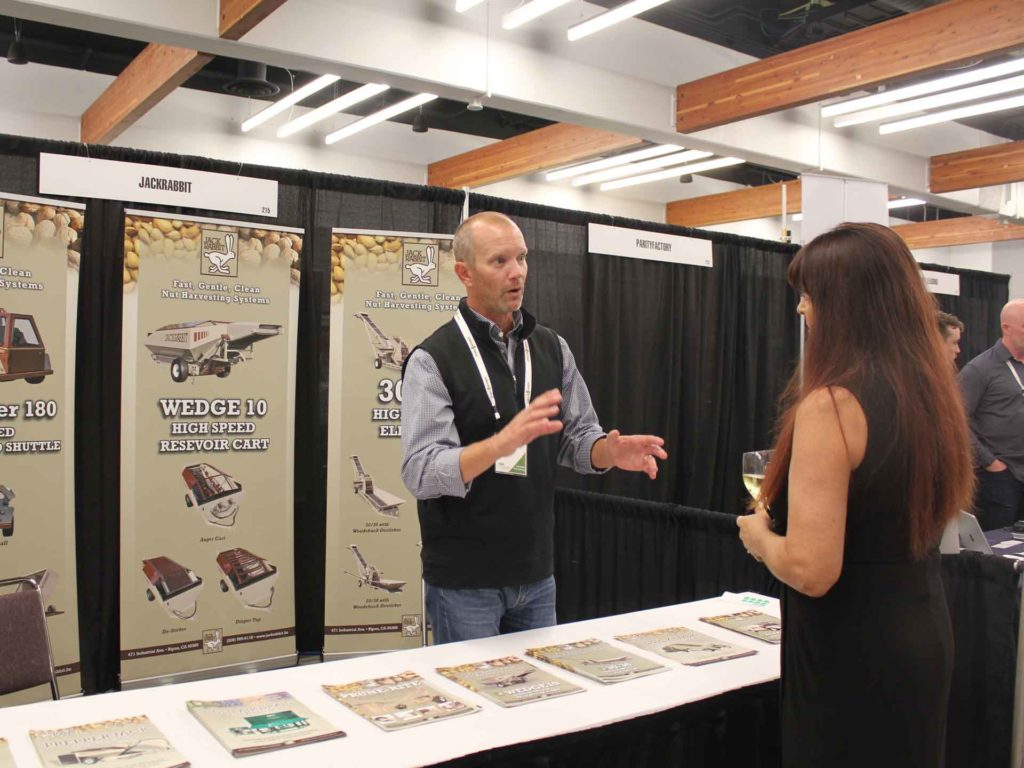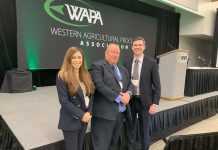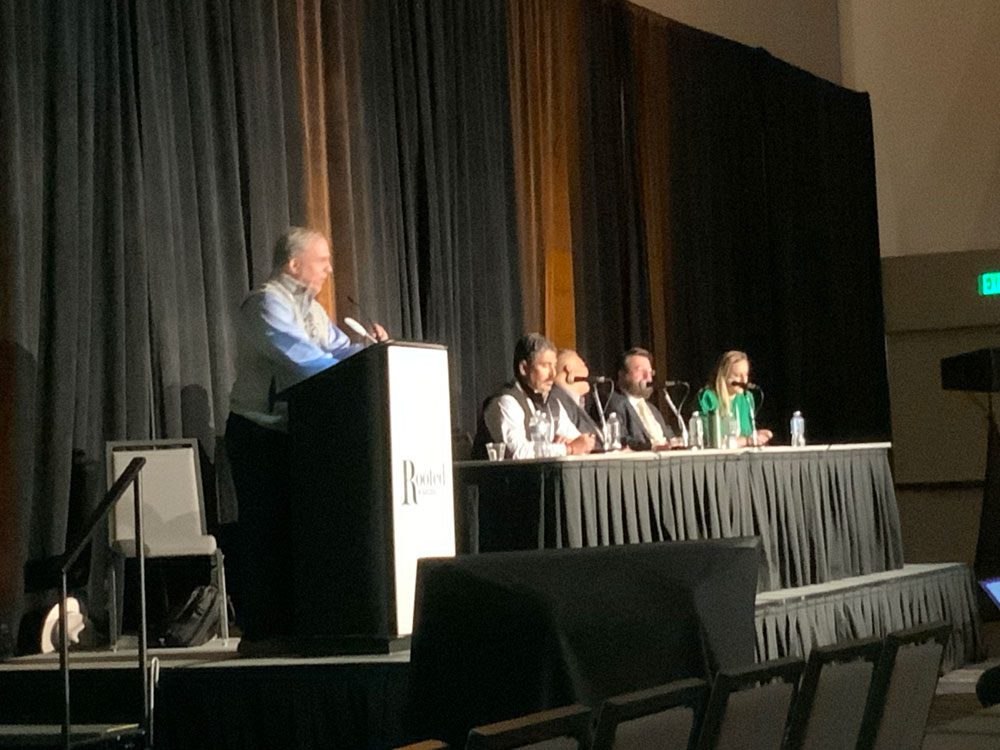In-depth discussions of the water, food safety and regulatory challenges facing agricultural processors were highlights of the Western Agricultural Processors Association annual meeting in Monterey.
Water
“Policy makers are losing sight of the importance of California agriculture to the U.S. and to the world, said Mike Wade, California Farm Water Coalition.
The State Water Resources Control Board’s water quality plan, adopted last December, calls for 30-50 percent unimpaired flows from tributaries of the San Joaquin River and prepares for 45-65 percent flow requirement on the Sacramento River. It also redirects 2 million acres feet of water through rivers to the Delta. The plan, Wade said, will impact most of California and ignores other environmental factors including predation, food and habitat quality and water quality.
An alternative and historic approach that goes beyond the boards’ flow-only approach is a voluntary agreement among stakeholders to fund science-based environmental restoration. This approach is supported by the Newsome administration and the state budget includes $70 million to assist with implementation, Wade said, but legislation that could derail it is moving through the state legislature.
SB-1, the California Environmental Public Health and Worker Defense Act of 2019 aims to overturn efforts to update federal environmental law and seeks to codify the federal biological opinions that have been shown not to work. This legislation, Wade added, also would take away any incentives for voluntary agreements by locking current requirements in place. There are environmental and fishing groups who are opposing the Proposition 68 funding for the voluntary agreements, Wade said, because they prefer the regulatory approach for water.
The bill has passed in the state Senate, but Wade said Newsome’s administration could push for amendments to help with the voluntary agreements.
“Our biggest challenge now is to get this (SB-1) amended,” Wade said.
As implementation of the Sustainable Groundwater Management Act (SGMA) moves forward, agriculture is realizing the impacts and the possibilities. While the ability to pump groundwater will be come restricted, impacting agricultural production, Wade said the Groundwater Sustainability Agencies (GSA) are working together on groundwater recharge and water transfers.
Improved water conveyance and delivery south of the Delta as well as surface storage are two of the preferred approaches to achieving groundwater balancer. The third is fallowing one million acres of farmland.
Wade noted the devastating economic effects of the Central Valley Project Improvement Act on poor West Side communities were ignored by policy makers.
FSMA
Carla Sanchez, assistant director of the Inspection Services division in California Department of Food and Agriculture, outlined some of the recent guidance changes in the Food Safety Modernization Act (FSMA). She also emphasized that California Department of Food and Agriculture (CDFA) is taking more of an education role in the implementation rather than a regulatory role.
Processors, Sanchez said, can expect that CDFA will follow Food and Drug Administration (FDA) guidance documents issued and will exercise enforcement discretion for operations that fall within the scope of those guidances.
Prior to inspection of farm operations, CDFA will send materials on what to expect in an inspection and confirm their arrival schedule. On the day of the inspection, the inspectors will observe and discuss any regulatory concerns and will leave written observations.
Of the 25 inspections done so far, Steve Patton of CDFA said that a lack of visitor policy, or documentation for sign in were common findings. Restroom issues were also common with lack of water for washing, soap and toilet paper.
“We are really looking for practices that can cause egregious conditions and those are rare,” Patton said.
Almonds, thanks to work by Almond Board of California, received enforcement discretion. Organizations working with other tree nuts are still working with Food and Drug Agency on the Produce Safety Rule.
Lobbyist George Soares pointed out some of the positive aspects of political appointments by the Newsome administration and he also chided the agriculture industry for not being more active in Sacramento.
Positives included re-appointment of Karen Ross as CDFA Secretary and Bill Lyons as an agriculture and water advisor. Former United States Department of Agriculture (USDA) Farm Service Agency director Val Dolcini was appointed by Newsome to serve as Deputy Secretary for Agriculture at California Environmental Protection Agency (CalEPA). He is also acting director of the Department of Pesticide Regulation.
“In agriculture this is progress,” Soares said.
But, he noted the lack of critical mass at the 20 Legislative days hosted each year by agriculture organizations. Too few people participate and sit on the sidelines, Soares said. Instead of complaining about issues, they need to find ways to improve the situation.
Soares also touched on SB-1, introduced by state senator Tony Atkins, noting it will kill water opportunities. Soares said he hopes the governor understands the voluntary agreements will die if the bill passes in its current form.
Looking at the next election cycle in 2022, Soares said the goal is to raise $6 million to fund campaigns that support agriculture. However, he said the agriculture industry needs to change its focus from ‘things’ to people.
“We need to refine our efforts and keep pushing for more balanced decision making.”

Regulatory and Legislative Updates
The Western Agriculture Processors Association (WAPA) team of Jodi Devaurs, Chris McGlothlin, Priscilla Rodriguez and Elda Brueggemann presented a regulatory and legislative issues update, highlighting some of the wins for the organization.
Rodriguez, WAPA’s director of food safety, noted the organization has been working with FDA to make changes in the FSMA’s preventative controls rule. The rule for almond hullers classified as facilities is still in effect. Almonds were deemed exempt from the Produce Safety Rule, meeting the “Rarely Consumed Raw” guidelines. Huller facilities that do not meet the current farm definition, Rodriguez said, still must comply, although WAPA is pushing for a rule clarification.
The push from the California Air Resources Board continues, targeting 12,000 non-compliant tractors for retirement by 2024. McGlothlin, WAPA’s director of technical services, said there are incentives being offered now to replace old equipment. Under the Cap and Trade deal, incentive funds are available for 60 percent of the cost of a new tractor or harvester, 75 percent for All Terrain Vehicles (ATVs) and 65 percent for new trucks. These incentives will only be available until 2025.
Challenges remain with stockpile elevator rules and the stick pile and biomass issue needs a legislative fix, McGlothlin said. Air curtain burners have been permitted, but are only a short-term fix for the biomass issue.
McGlothlin also announced a new course that will begin the fall semester at Fresno State: Tree Nut Processing will include a lab with hands on experience in processing equipment. The school is also seeking specific equipment to be used in the course.
Devaurs, WAPA’s director of regulatory affairs said the two-year phase out for chlorpyrifos presents a challenge for almond growers. There is funding available during that time to find an alternative, but little chance that a new product will be developed to replace chlorpyrifos in that time.
Occupational Safety and Health Administration (OSHA) requirements for nighttime work activity and indoor conditions continue to burden processors. New proposed language for outdoor agriculture activities during hours of darkness is more stringent than that for other industries, Elda Brueggemann, WAPA director of environmental and safety services said.
She also noted a new proposed standard for protecting workers from wildfire smoke. This would require monitoring of air quality index, but Brueggemann said it was unclear if the index was by county or state.
Brueggemann also noted a proposed workplace violence standard for general industry. Elements of the proposal include assigning a person responsible for implementing a plan, procedures for getting workers involved in carrying out the plan, evaluating work place violence hazards, training, reporting and investigating.













